Description
:About saffron
In ancient Persia, saffron (Crocus sativus ‘Hausknechtii’) was cultivated at Derbena and Isfahan in the 10th century BC. There, Persian saffron threads have been found interwoven into ancient Persian royal carpets and funeral shrouds. Saffron was used by ancient Persian worshippers as a ritual offering to their deities, and as a brilliant yellow dye, perfume, and a medicine. Thus, saffron threads would be scattered across beds and mixed into hot teas as a curative for bouts of melancholy. Indeed, Persian saffron threads, used to spice foods and teas, were widely suspected by foreigners of being a drugging agent and an aphrodisiac. These fears grew to forewarn travelers to abstain from eating saffron-laced Persian cuisine. In addition, Persian saffron was dissolved in water with sandalwood to use as a body wash after heavy work and perspiration under the hot Persian sun. Later, Persian saffron was heavily used by Alexander the Great and his forces during their Asian campaigns. They mixed saffron into teas and dined on saffron rice. Alexander personally used saffron sprinkled in warm bath water, taking after Cyrus the Great. Much like Cyrus, he believed it would heal his many wounds, and his faith in saffron grew with each treatment. He even recommended saffron baths for the ordinary men under him. The Greek soldiers, taken with saffron’s perceived curative properties, continued the practice after they returned to Macedonia.
While saffron was exported to many parts of the world, the Iranians introduced the properties to the Greeks, Romans, Chinese, and Sami tribes, including the Arabs, and in the first to fourth millennium Ages they taught it to the Islamic customs around the Mediterranean. Thus, the first saffron of the land was used by the Iranians exiled by Muawiya in the dining areas, then the saffron was planted in northern Africa and Andalusia (Islamic Spain) and Sicily (Sicily), and Iranian tribes such as Rostamian and Benu tabary in the transfer of effective saffron culture they were.
QUALITY
When you have a fresh and pure product, you will most likely have a very high-quality saffron. In grade 1 saffron you cannot find any stigmas that have any color except deep vivid red. Most saffron products offer their rating grade on their pages. Our Persian Saffron is rated 259.3 by the lab test and that’s for the premium Persian Saffron as the highest quality of saffron in the world!
Amazing Health Benefits Of Saffron
Saffron is royalty in the world of spices. As one of the most expensive options, it features a distinct flavor, color, and aroma that can add an exotic touch to your favorite risotto, biryani, and milky desserts. This golden spice, derived from the dried stigma and style of the purple blue saffron flower, is native to the Middle East and has been used as a flavoring agent across cultures for over 3000 years. In Asian medicine, saffron is valued for its medicinal properties and is used to treat a range of disorders from inflammation and nausea to throat diseases and menstrual disorders.2 Needless to say, it is one talented spice.
The health benefits of saffron are so significant that modern medical science has begun to pay attention. Most notably, saffron’s bioactive compounds like crocin, crocetin, picrocrocin, and safranal have stolen the spotlight. Read on to learn what this superstar spice can do for you.
1. Soothes An Upset Stomach
Traditionally, saffron has been used in Eastern medicine to treat gastric disorders. This means that it can help eliminate the burning pain, heartburn, and indigestion that comes with a stomach ulcer. Animal studies show that saffron extract and its active components crocin and safranal have antioxidant properties that reduce ulcer formation by preventing damage to the gastric mucosa. If you are prone to ulcers, a pinch of saffron may be just what the doctor ordered.
2. Lowers Depression
Depression is a common problem that impacts 19 million Americans.And while there are countless pills to treat depression, saffron has emerged as an effective and natural alternative. One study determined that the power of saffron is comparable to the antidepressant imipramine for treating mild to moderate depression. Saffron seems to work its magic through crocin and safranal, both of which modulate the neurotransmitters dopamine, serotonin, and norepinephrine, the cocktail of brain chemicals that influence your mood.
3. Improves Premenstrual Syndrome
About 85% of menstruating women suffer from at least one premenstrual syndrome (PMS) symptom during their monthly cycle.6 You might be surprised to learn that a remedy for PMS is sitting right on your spice rack. Research has found that saffron can significantly reduce the symptoms of PMS that impact mood, behavior, and pain. The claim to fame? Saffron’s ability to influence the neurotransmitter serotonin.
4. Lowers Insulin Resistance
Insulin resistance – a condition in which your cells stop responding normally to the hormone insulin – is a leading factor in the development of diabetes. Crocetin, a major component of saffron, has been found to tackle insulin resistance. An animal study found that when rats were fed a high-fructose diet, they developed insulin resistance along with many other pathological changes. Amazingly enough, crocetin’s antioxidative and anti-inflammatory properties alleviated their insulin insensitivity. And while it is always best to limit high-fructose foods, saffron may be able to help prevent the negative impact of the occasional soda and candy.
5. Protects Your Heart
Saffron can be a real treat for your heart. It has antioxidant and anti-inflammatory properties that can promote healthy arteries. Animal studies have also shown that crocetin has the ability to lower cholesterol. In fact, according to some researchers, one of the reasons Mediterranean countries like Spain have low rates of cardiovascular diseases is due to their heavy use of saffron. Finally, the perfect excuse to whip up an authentic saffron-infused paella for dinner.
6. Preserves Your Sight
Age-related macular degeneration (AMD) is the leading cause of blindness in the developed world.10 When AMD develops, light-sensitive cells in your retina start to break down over time. However, research has shown that saffron supplementation can result in long-term stable improvement in retinal function in those with AMD. The stars of the show are crocin and crocetin, which are thought to protect light sensitive cells from retinal stress. They even have the ability to regulate cell death.
Clearly, this is one spice that packs a healthy punch. Next time you are in the kitchen, consider adding an extra dash of delicious saffron to your food. Your body will thank you!
How to recognize the freshness
One of the best methods to test the freshness is to take a look at the color of the saffron. Look for a vivid crimson red on all threads (not partial). The darker colors or light orange threads that offered in powder formats mostly in other stores are just the lowest quality of saffron. Sargol Saffron vivid strong Natural redness in all threads means they’re natural, pure, and very fresh.
How to Use Saffron
The best way of using saffron is to draw it. In drawing the spice, users are advised to put a handful of saffron in a bowl pestle. Next, it must be rubbed with a small sugar. Then, a tsp of rubbed saffron must be mixed with a ½ cup of boiling water.
Saffron with Iranian packaging in European, Main Land China and other countries stores
According to Mirie, saffron is packed with Iranian packs in supermarkets in America, Germany, France, Italy and even Spain.
Vice President of the Saffron National Council also emphasized: Iran’s packages are far better than European packaging, and 200 can be packaged by each company.
ARKA CO packaging depends on the customer’s order and demanded.

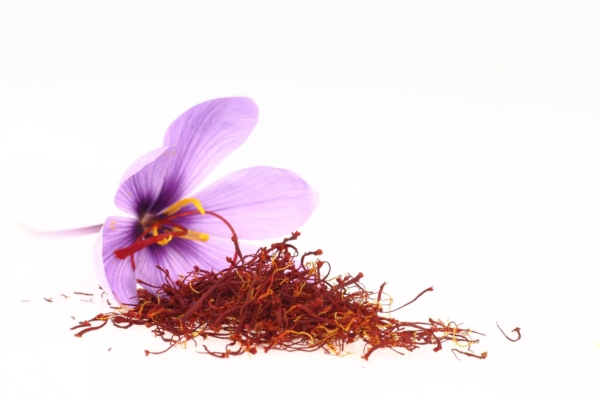
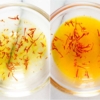
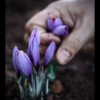
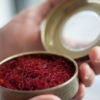

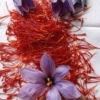
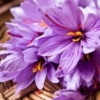
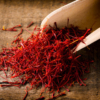
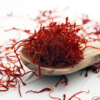







Reviews
There are no reviews yet.